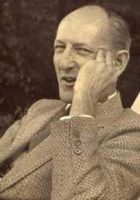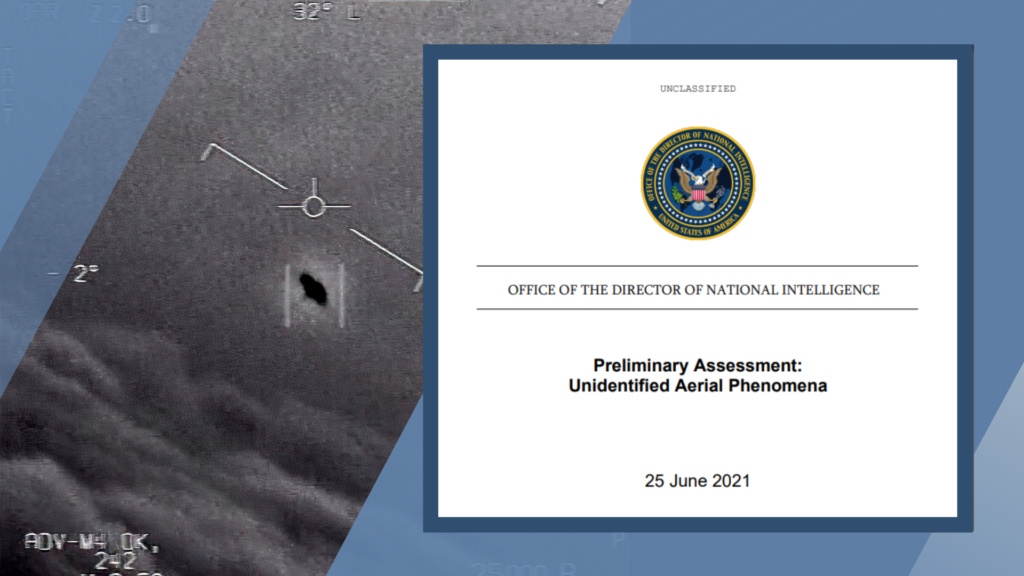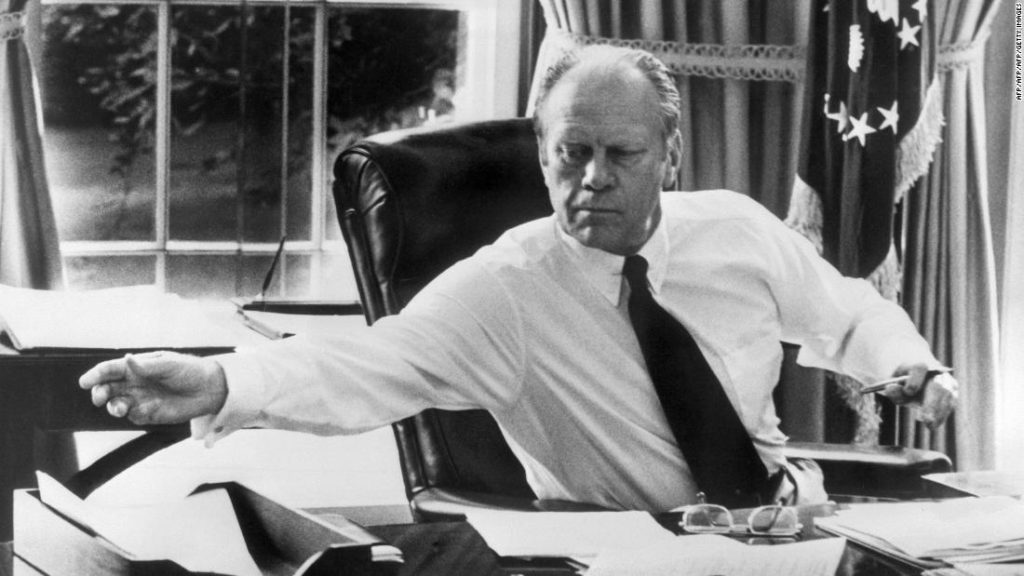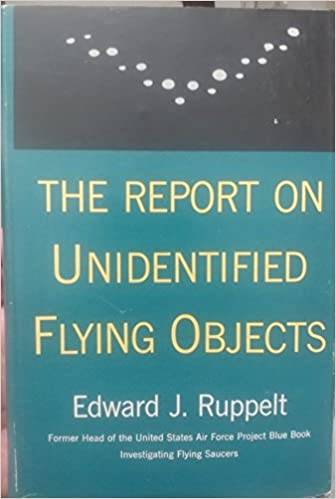by Charles Lear
 Of all the private organizations devoted to UFO investigation, the National Investigations Committee on Aerial Phenomena was arguably the most ambitious and tenacious. This was driven in large part by its director, Donald Keyhoe. Keyhoe held the beliefs that UFOs are extraterrestrial and that the U.S. Government, particularly the Air Force, was keeping information from the public that could possibly prove the ET hypothesis. As effective as NICAP was at hounding the Air Force and convincing many in the U.S. Congress that UFOs were deserving of scientific study, there are indications that the CIA was involved in both the beginning and the end of the organization.
Of all the private organizations devoted to UFO investigation, the National Investigations Committee on Aerial Phenomena was arguably the most ambitious and tenacious. This was driven in large part by its director, Donald Keyhoe. Keyhoe held the beliefs that UFOs are extraterrestrial and that the U.S. Government, particularly the Air Force, was keeping information from the public that could possibly prove the ET hypothesis. As effective as NICAP was at hounding the Air Force and convincing many in the U.S. Congress that UFOs were deserving of scientific study, there are indications that the CIA was involved in both the beginning and the end of the organization.
 Todd Zechel wrote about the CIA – NICAP connection in the January 1979 issue of Just Cause, the newsletter put out by Citizens Against UFO Secrecy. NICAP was incorporated in 1956, and two men Zechel argues were covert CIA operatives were put into chair positions within the organization. One of these men was Bernard J. O. Carvalho, who was made the chairman of NICAP’s membership subcommittee According to Zechel, Carvalho worked as a “front man” for companies secretly run by the CIA. The other was “Count” Nicolas de Rochefort, who was made Vice-Chairman of NICAP. According to Zechel, de Rochefort worked with the CIA’s Psychological Warfare Staff. Zechel tells the reader “there is more than ample evidence to conclusively establish both de Rochefort and Cavalho were at least during certain periods of their lives covert employees of the Central Intelligence Agency.”
Todd Zechel wrote about the CIA – NICAP connection in the January 1979 issue of Just Cause, the newsletter put out by Citizens Against UFO Secrecy. NICAP was incorporated in 1956, and two men Zechel argues were covert CIA operatives were put into chair positions within the organization. One of these men was Bernard J. O. Carvalho, who was made the chairman of NICAP’s membership subcommittee According to Zechel, Carvalho worked as a “front man” for companies secretly run by the CIA. The other was “Count” Nicolas de Rochefort, who was made Vice-Chairman of NICAP. According to Zechel, de Rochefort worked with the CIA’s Psychological Warfare Staff. Zechel tells the reader “there is more than ample evidence to conclusively establish both de Rochefort and Cavalho were at least during certain periods of their lives covert employees of the Central Intelligence Agency.”
 It’s official: unidentified aerial phenomena exist, the Pentagon takes the subject seriously, but no there one can say if aliens are involved. This is according to the unclassified report from the Office of the Director of National Intelligence that was delivered to Congress this past Friday.
It’s official: unidentified aerial phenomena exist, the Pentagon takes the subject seriously, but no there one can say if aliens are involved. This is according to the unclassified report from the Office of the Director of National Intelligence that was delivered to Congress this past Friday. In 1966, there was a series of UFO sightings in Michigan that got the attention of the press and the Air Force. There was a great deal of excitement and Project Blue Book (the code name for the Air Force’s UFO study) scientific consultant, Dr. J. Allen Hynek, was sent in to help calm things down. At a press conference, he offered some possible explanations. Due to sightings over a marsh, he speculated that people there had seen ignited balls of swamp gas, some going out and others igniting, and that this created the illusion of movement. The swamp gas explanation made the headlines and outraged many Michigan residents, including Michigan Representative and House Minority Leader Gerald Ford. He sent a letter dated March 28, 1966, to the chairmen of the Science and Astronautics Committee and the Armed Services Committee, suggesting that one of them schedule “hearings on the subject of UFO’s”. He mentioned Hynek’s explanations in the letter and, in a press release that same day, it is noted that he described Hynek’s swamp gas explanation as “flippant.” Documents relating to Ford’s efforts and the resultant open hearing are housed at the
In 1966, there was a series of UFO sightings in Michigan that got the attention of the press and the Air Force. There was a great deal of excitement and Project Blue Book (the code name for the Air Force’s UFO study) scientific consultant, Dr. J. Allen Hynek, was sent in to help calm things down. At a press conference, he offered some possible explanations. Due to sightings over a marsh, he speculated that people there had seen ignited balls of swamp gas, some going out and others igniting, and that this created the illusion of movement. The swamp gas explanation made the headlines and outraged many Michigan residents, including Michigan Representative and House Minority Leader Gerald Ford. He sent a letter dated March 28, 1966, to the chairmen of the Science and Astronautics Committee and the Armed Services Committee, suggesting that one of them schedule “hearings on the subject of UFO’s”. He mentioned Hynek’s explanations in the letter and, in a press release that same day, it is noted that he described Hynek’s swamp gas explanation as “flippant.” Documents relating to Ford’s efforts and the resultant open hearing are housed at the  The 1956 book by Edward J. Ruppelt, “The Report on Unidentified Flying Objects” is a must-read for anyone interested in the subject. Capt. Ruppelt was the first director of Project Blue Book after leading a massive re-organization effort to revitalize the investigation while it was still operating as Project Grudge. He was the person who came up with the designation, Unidentified Flying Object, or UFO, which was pronounced “yoofo”, for what were popularly known as flying saucers. His book recounts his time with the project under both names and provides an insider’s view of what were then classified activities. There are two editions of the book with two different endings. The second edition was published in 1960 and Ruppelt included recent cases as a means to update the book. This edition has three more chapters tacked on that have a decidedly more negative tone than the original preceding chapters, where Ruppelt displays an open-minded view. This has led some to wonder if Ruppelt was pressured by the Air Force, which was then following the
The 1956 book by Edward J. Ruppelt, “The Report on Unidentified Flying Objects” is a must-read for anyone interested in the subject. Capt. Ruppelt was the first director of Project Blue Book after leading a massive re-organization effort to revitalize the investigation while it was still operating as Project Grudge. He was the person who came up with the designation, Unidentified Flying Object, or UFO, which was pronounced “yoofo”, for what were popularly known as flying saucers. His book recounts his time with the project under both names and provides an insider’s view of what were then classified activities. There are two editions of the book with two different endings. The second edition was published in 1960 and Ruppelt included recent cases as a means to update the book. This edition has three more chapters tacked on that have a decidedly more negative tone than the original preceding chapters, where Ruppelt displays an open-minded view. This has led some to wonder if Ruppelt was pressured by the Air Force, which was then following the